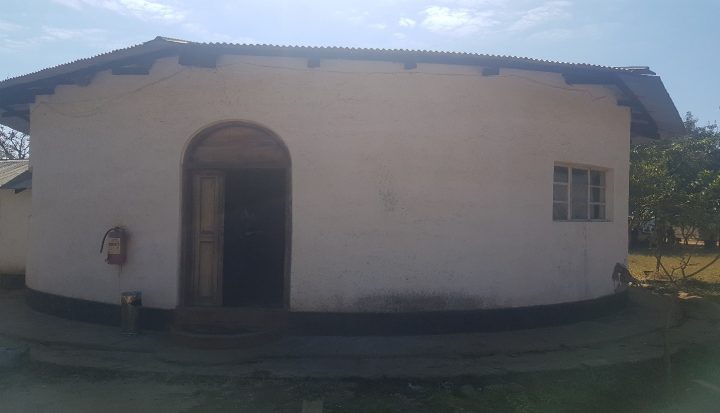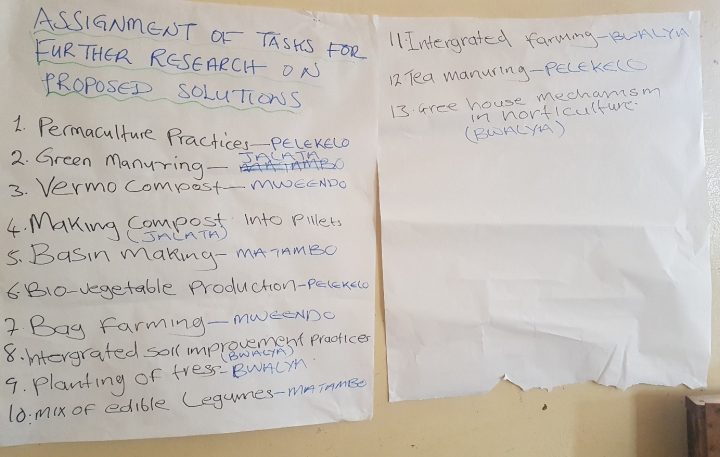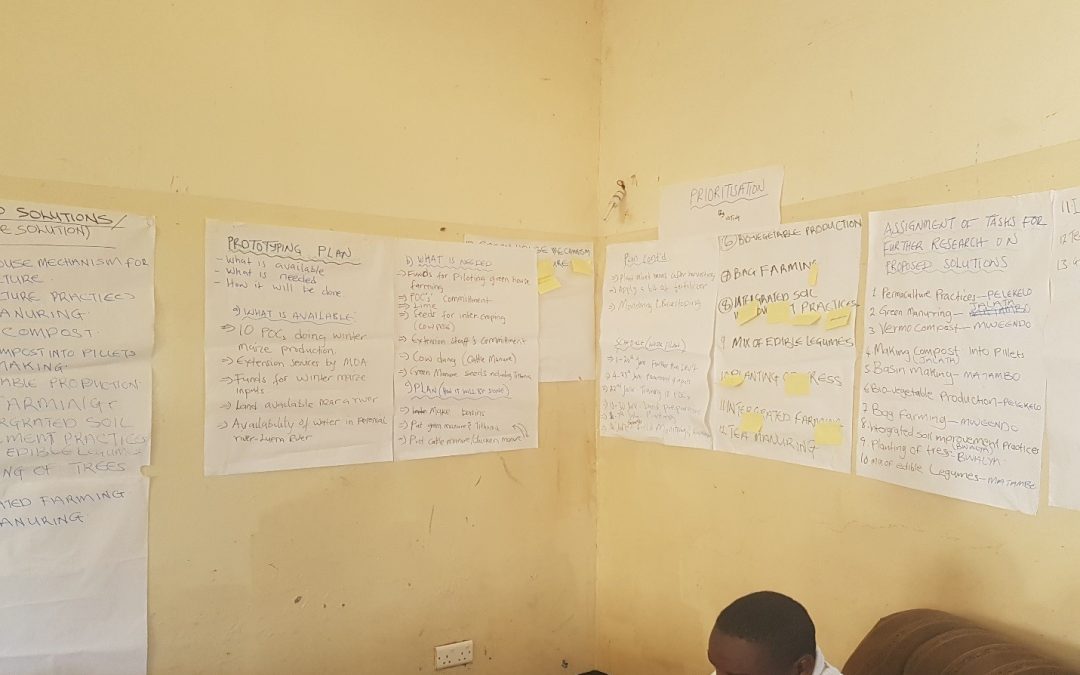“What I have learned is that innovation is not a one-day activity.”
This was a point that truly stuck out at me after we interviewed our Innovation Fellow, Kakoma Kakoma, who is currently based in Kaoma, Zambia. There are a lot of assumptions about what the innovation process does or does not look like and one of the consistent insights from our Fellows is that “Hey – this takes a lot of time.” Kakoma is working within the context of the Mayukwayukwa which was established in 1966 and is one of the oldest refugee settlements in Africa. The population of Mayukwayukwa is made up of over 11,000 refugees. Over 6,000 of these are from Angola and the rest are from Democratic Republic of Congo, Burundi, and Rwanda. There are numerous challenges that people in Mayukwayukwa face including high dependency on subsistence farming, limited opportunities for self-reliance or formal employment, harsh climate conditions, in addition to poor access to finance and links with markets that could create a more business enabling environment. Kakoma had a lot of opportunities to bring innovation into his operation and we wanted to better understand how he did it.
In this article we introduce you to Kakoma, discuss why he chose this path for his Fellowship and the most difficult aspects of facilitating innovation.
If you missed the first article on Gate II of the Innovation Fellowship – you can catch-up on the main expectations of the process here.
- Can you tell us a bit about your Challenge and why you chose it?
My challenge revolves around an issue that has been affecting Mayukwayukwa refugee settlement since its inception more than 50 years ago. Many settlements around the world seem to be placed in areas with either sand/loose soils or areas with less vegetation. The challenge of soils with less or no fertility for agricultural production has affected Mayukwayukwa settlement and hosting communities around for many years. This problem is exacerbated by the limited availability of land for farming and the lack of/limited access to markets due to the remote location of the settlement. This makes earning a livelihood or becoming self-reliant in Mayukwayukwa a far-fetched notion, given the fact that the majority of the households’ main sources of income is generated from agriculture production and trading in agricultural produce. The soils are sandy to the extent that a farmer will require investing more in fertilizers and lime for them to obtain significant yields. The issue is vital because many of people forced to flee rely on agriculture to sustain their livelihoods. Many interventions targeting refugees in rural areas also tend to be focused on agriculture and agricultural related activities as it is the main livelihood source of income for the rural refugees I work for.
The problem of poor/less fertility soils in Mayukwayukwa refugee settlement has been echoed in many previous reports including Participatory Assessments, MFTs, the 2017 Rapid Livelihood assessment, 2016 Soil assessment by Zambia Agricultural Research Institute, 2016 Refugee Economies Study by INESOR and University of Oxford’s Centre for Refugee Studies. In addition, there is also lack of sufficient land in Mayukwayukwa. Mayukwayukwa refugee settlement also continues to experience harsh environmental conditions such as hot temperatures and low rainfall patterns. Therefore, innovative ways of farming that can sustainably be adopted by refugees will uplift their livelihoods and go a long way in shaping them towards self-reliance.
In it is in the view of the problem highlighted above that the fellow decided together with people forced to flee, agricultural technical experts in the settlement, to define the challenge as “how might people forced to flee successfully do farming under the less fertile and limited soils of Mayukwayukwa refugee settlement.”
- What was easy and/or challenging in facilitating ideation with your group?
What was challenging was initially to put people together that will as a group and come up with solutions to the challenge. Our people forced to flee tend to have high expectations of relief support when they are called. It was challenging to convince refugees to work towards finding solutions whose fruits may not be seen or may be seen in the future. Most of the refugees are banking on resettlement to a third country.

Nicknamed the Innovation Chamber: The structure where the most fruitful brainstorming sessions were held.
- What were the main outcomes of ideation process for you?
The main outcomes of the idea generation process for me was a clear direction on the solutions to the problem identified in the challenge definition. Many existing and exciting new solutions to improving soil fertility were presented and discussed in depth. The solutions that count as the main outcome for me are:
- Integrated Soil Improvement Practice:
Integrated Soil Improvement Practices is a set of agricultural practices adapted to local conditions to maximize the efficiency of nutrient and water use and improve agricultural productivity. This model centers on the combined use of mineral fertilizers and locally available soil amendments (such as lime and phosphate rock) and organic matter (crop residues, compost, and green manure) to replenish lost soil nutrients. The use of basins in order to streamline this innovative model within the frames of climate smart agriculture will also be added advantage. The model improves both soil quality and the efficiency of fertilizers and other agro-inputs. In addition, the model promotes improved germplasm (living genetic resources such as seeds or tissues that are maintained for the purpose of animal and plant breeding, preservation, and other research uses), agroforestry and the use of crop rotation and/or intercropping with legumes. Farmers who have adopted this model have more than doubled their agricultural productivity and increased their farm-level incomes by 20 to 50 percent.
- Use of low-cost greenhouses:
The low-cost greenhouse proposed is basically a framed structure covered with a transparent material. The framed structure in our case will be made out of planks and poles (Poles are obtained freely in surrounding forests). This type of a greenhouse makes no use of a pad and fan. A greenhouse technology is a technique of providing favorable environment condition to the plants. It is rather used to protect the plants from the adverse climatic conditions such as the wind, cold, precipitation, excessive radiation, extreme temperature, insects, and diseases. It is also of vital importance to create an ideal micro climate around the plants. This is possible by erecting a greenhouse/glass house, where the environmental conditions are less favorable such as those in Mayukwayukwa. Mayukwayukwa refugee settlement continues to experience harsh environmental conditions such as hot temperatures and low rainfall patterns.

Assignment of tasks for further research -including cost benefit analysis on proposed solutions.
- What surprised you most about the process of ideation?
The process can be irritating, stressing and one can actually give up if they have less interest in the challenge at hand. Each time I felt close to the solution, new information distanced us from ever arriving at a solution. This is because the more I learned about a proposed solution, the less desirable it becomes. When one learns more about something, they become better informed to make a good judgment. I learned that ideation is only the beginning of a larger process. The ability to persist in the search for an answer is what defines an Innovation Fellow.
- How has your perception or definition of innovation changed in the first 6 months of the Fellowship?
Innovation is neither easy nor difficult. What I have learned is that innovation is not a one-day activity. It requires patience while being persistent in the desire to find a solution to whatever problem one is trying to solve. The hunger for learning more about a challenge, situation, concept, or problem needs to constantly be ignited. What has to constantly think about the problem they want to solve, they have to constantly talk about it regardless of the level of knowledge the audience has about the problem or solution. What I realized is that innovation is not possible if it is done alone. A fellow needs people to say ‘maybe yes’ or maybe ‘no’, even if such people are less knowledgeable about the problem. In the past 6 months, I have thus learned that what defines innovation is the ability to persist in the search for a solution to a problem.
If you’d like to repost this article on your website, please see our reposting policy.

